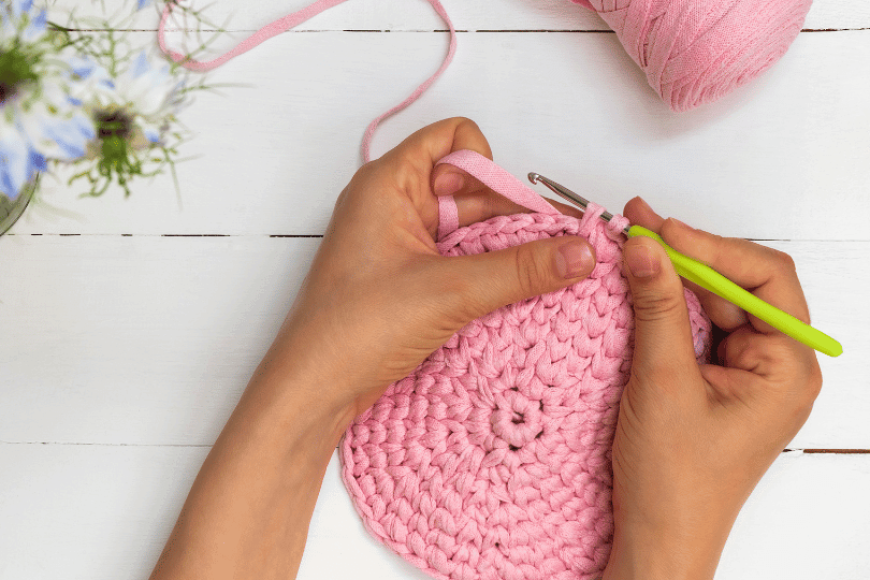Hoe verkoop je je zelfgemaakte brei- of haakcreaties: Een beginnersgids Deel 1
Je zelfgemaakte breisels of haakwerkjes verkopen kan ontzettend leuk en belonend zijn. Niet alleen deel je jouw creaties met anderen, je kunt er ook nog een mooi zakcentje mee verdienen. Maar je hobby omtoveren tot een winstgevende onderneming is niet altijd zo simpel als het lijkt. In deze blog, het eerste deel van een serie, neem ik je mee langs een aantal essentiële tips en overwegingen als je je handgemaakte producten wilt gaan verkopen.
Je creaties verkopen: een droom of een uitdaging?
Beginnen met het verkopen van je handgemaakte producten kan als een droom voelen, maar het brengt zeker ook de nodige uitdagingen met zich mee. Vandaag geef ik je een kijkje in mijn verkoopstrategie en deel ik dingen waar je rekening mee moet houden voordat je erin duikt. Want eerlijk: iedereen kan iets verkopen… toch?
In dit eerste deel bespreken we:
- De basisprincipes van verkopen
- Waar je je producten kunt verkopen
- Hoe je je prijzen bepaalt
1. Kan iedereen verkopen?
Ja, iedereen kan verkopen! Maar er komt meer bij kijken dan alleen je creaties ergens neerzetten. Je moet bepalen waar je gaat verkopen — op een lokale markt, via een online marktplaats, op je eigen website, of bijvoorbeeld via Etsy? Elke optie heeft zijn voor- en nadelen. Soms is een combinatie van meerdere kanalen zelfs het beste.
Voordat je begint, is het belangrijk om de basis te begrijpen. Wat heb je nodig? Welke tools kunnen je helpen? En heb je de kleine lettertjes gelezen?
2. Platforms, websites en prijzenoorlogen
Er zijn verschillende platforms waar je jouw producten kunt verkopen. Sommige zijn gratis, zoals Vinted, maar je verdwijnt daar vaak snel op pagina 120 — ver weg van potentiële klanten. Hier een top 3 van opties om mee te starten:
- Eigen website:
Als je overweegt een webshop te beginnen, kun je een eigen domein registreren en een site bouwen. Superleuk, maar vergeet de kosten niet, zoals hosting en domeinregistratie. En als je na een paar maanden besluit te stoppen, zit je vaak nog vast aan die jaarlijkse kosten. - Platforms zoals Etsy:
Etsy is populair bij starters, maar vereist meer dan alleen je producten uploaden. Je moet je shop promoten, klantenservice bieden en opvallen in een grote markt. Eventueel kun je ook kijken naar kleinere, niche platforms zoals Handwerkmarkt (voor Nederlandse en Belgische makers) of alternatieven zoals Tedooo of Patreon. - Andere verkoopkanalen:
Platforms zoals Vinted, Amazon of Tedooo kunnen ook een optie zijn. Op Vinted kun je bijvoorbeeld gratis je producten aanbieden. Soms kun je via deze platforms klanten trekken en ze later doorverwijzen naar je eigen webshop. Houd er wel rekening mee dat sommige platforms commissie vragen over verkochte items.
3. Je prijzen bepalen
Je prijs bepalen is misschien wel een van de lastigste dingen. Je wilt je materiaalkosten dekken én jezelf eerlijk betalen voor je werk, maar je prijs moet ook aantrekkelijk blijven voor kopers. Sommige verkopers op Etsy stunten met extreem lage prijzen, maar vaak gaat dat ten koste van kwaliteit en klanttevredenheid.
Laat je dus niet gek maken! Focus op de kwaliteit en uniciteit van jouw werk.
Hier is een simpele formule die ik zelf gebruik:
Materiaalkosten x 2 + (Uren werk x €2 per uur)
Bijvoorbeeld:
Materiaal kost €6 en je hebt er 10 uur aan gewerkt → Prijs: €6 x 2 + (10 x €2) = €32.
Deze formule is geen wet van Meden en Perzen, maar wel een fijne richtlijn. Vergeet niet ook rekening te houden met kleine pauzes, extra tijd voor het bijwerken van patronen of het herstellen van foutjes.
Tip: Bereken je materiaalkosten altijd op basis van complete bollen garen, niet alleen de hoeveelheid die je gebruikt. Zo kom je niet voor verrassingen te staan als je toch meer nodig blijkt te hebben.
Wat komt er hierna?
Begin alvast na te denken over een naam voor je winkel.
Denk na over:
- Wat je wilt verkopen
- De mate van concurrentie
- Of je alleen binnen Nederland wilt verkopen of internationaal
Bepaal ook alvast of je liever een eigen website maakt of via een platform zoals Etsy begint.
Als je ervaring hebt met marketing en websites bouwen, kan een eigen shop een leuke uitdaging zijn.
Ben je daar nog niet zo thuis in? Dan is een gebruiksvriendelijk platform misschien een betere keuze.
Maak een klein ondernemingsplan om je ideeën te ordenen en te zien of je er echt voor wilt gaan!
Stay Tuned voor Deel 2
In Deel 2 gaan we dieper in op de juridische kant van verkopen, zoals algemene voorwaarden, retourbeleid, verzendkosten en het geven van kortingen.
Heb je vragen? Laat het me weten in de reacties! Succes!


[…] By Crochet Bakery Free knitting pattern: pumpkin Sep 5 2024 | By Crochet Bakery How to Sell Your Handmade Knits or Crochet Creations: A Beginner’s Guide Part 1 Sep 3 […]
[…] Parts 1 and part 2 of this series, I covered the basics of setting up your online crochet business, […]